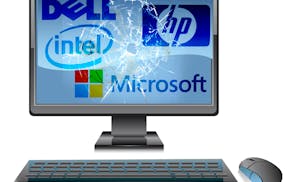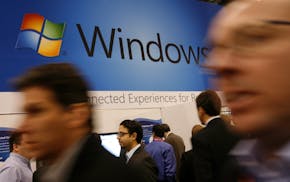Q: You hit on one of my favorite annoyances by advising your readers never to click on links contained in e-mail messages (see tinyurl.com/nxua6u7). What about all the legitimate e-mails people receive from companies that contain e-mail links?
Clive Walden, Carlsbad, Calif.
A: At a time when many corporate-looking e-mails are really clever fakes containing links to malicious websites, how are consumers to know which e-mails to trust? I suggest erring on the side of caution and not clicking on any links contained in e-mails.
Legitimate corporations can adapt by not putting clickable links in their e-mails, and instead directing consumers to find more information at their websites. (Consumers should still visit only websites with straightforward addresses such as Google.com, not suspicious similar names such as GoGoogle.com.) This approach may not please marketers who want consumers to make impulse purchases by clicking on links in e-mails. But it will help protect consumers.
Q: My computer is slow when I try to reach websites. And when I write e-mail messages, I have to wait for what I've typed to show up on the screen. I've tried different computer cleaning methods without success; the most recent change I made is to reinstall Microsoft Security Essentials because it appeared to be gone. What should I do?
Marilyn Remer, Savage
A: If Microsoft Security Essentials disappeared, it's likely that your PC is infected with malicious software. If so, the PC may be slow because it's being used to relay spam e-mail. Try running the free version of the Malwarebytes security program (see tinyurl.com/dx3u46y).
But also check your Internet speed by going to speedtest.net and clicking "begin test."
Q: I recently lost Internet access on my older desktop PC running Windows 2000 Professional. Both the Microsoft Internet Explorer and Mozilla Firefox Web browsers indicate that they can't find the server. I think my wireless router is working because I still get Web access on my phone.
Marty Brown, Minneapolis
A: Unplug the router and modem (they may be one device), then plug them in again. Make sure all electrical and data cables are tightly connected. Also make sure your router and modem are working, because your phone could be accessing the Internet via the cellular network. The modem-router lights for functions such as power, send, receive and online should be lit. Ask your Internet service provider to remotely verify that the modem is working.
If those things don't work, the problem could be a hardware failure in the PC. It's hard to know if the problem is in Windows 2000 because Microsoft stopped providing technical support for it in 2010. I suggest you buy a Windows 7 PC.
E-mail tech questions to steve.j.alexander@gmail.com or write to Tech Q&A, 425 Portland Av. S., Minneapolis, MN 55488. Include name, city and telephone number.

Alexander: A beeping computer is telling you what's gone wrong inside

Alexander: How to stop deleted iPhone e-mails from coming back

Alexander: Refurbished PCs may need a BIOS update to use new components

Alexander: Windows 11 not always to blame for browser or e-mail problems


